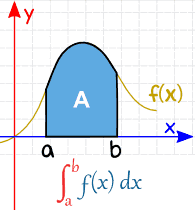If the orthocentre of the triangle, whose vertices are $(1,2),(2,3)$ and $(3,1)$ is $(\alpha, \beta)$, then the quadratic equation whose roots are $\alpha+4 \beta$ and $4 \alpha+\beta$, is
- $x^2-19 x+90=0$
- $x^2-20 x+99=0$
- $x^2-18 x+80=0$
- $x^2-22 x+120=0$
The Correct Option is B
Approach Solution - 1
The correct answer is option (B) : x2−20x+99=0

\((\frac{β−3}{α−2})(\frac{1}{−2})=−1\)
\(β−3=2α−4\)
\(β=2α−1\)
\(m_{AH}\times m_{BC}=−1\)
\(⇒(\frac{β−2}{α−1})(−2)=−1\)
\(⇒2β−4=α−1\)
\(⇒2(2α−1)=α+3\)
\(⇒3α=5\)
\(α=\frac{5}{3}, β=\frac{7}{3} \)
\(⇒H(\frac{5}{3}, \frac{7}{3})\)
\(α+4β= \frac{5}{3} + \frac{28}{3} = \frac{33}{3} =11\)
\(β+4α= \frac{7}{3} + \frac{20}{3} = \frac{27}{3} = 9\)
\(x^2 −20x+99=0\)
Approach Solution -2
Step 1: Finding slopes of perpendicular altitudes: \[ m = \frac{-1}{2} = -\frac{1}{2} \] \[ \text{Here } m_{BH} \times m_{AC} = -1 \] \[ \beta - 3 = 2\alpha - 4 \] \[ \beta = 2\alpha - 1 \] Step 2: Using midpoint formula and relations, we find: \[ \alpha = \frac{5}{3}, \quad \beta = \frac{7}{3} \]
Step 3: Now, computing roots: \[ \alpha + 4\beta = 11, \quad 4\alpha + \beta = 9 \] \[ x^2 - (11 + 9)x + 11 \times 9 = 0 \] \[ x^2 - 20x + 99 = 0 \]
Top Questions on Definite Integral
- Evaluate the definite integral: \( \int_{-2}^{2} |x^2 - x - 2| \, dx \)
- MHT CET - 2025
- Mathematics
- Definite Integral
- The value of the integral \[ \int_{-1}^{2} \log_e \left( x + \sqrt{x^2 + 1} \right) \, dx \] is:
- JEE Main - 2024
- Mathematics
- Definite Integral
The value \( 9 \int_{0}^{9} \left\lfloor \frac{10x}{x+1} \right\rfloor \, dx \), where \( \left\lfloor t \right\rfloor \) denotes the greatest integer less than or equal to \( t \), is ________.
- JEE Main - 2024
- Mathematics
- Definite Integral
- The value of \(\lim_{{n \to \infty}} \sum_{{k=1}}^{n} \frac{n^3}{{(n^2 + k^2)(n^2 + 3k^2)}}\) is
- JEE Main - 2024
- Mathematics
- Definite Integral
If the value of the integral
\[ \int_{-\frac{\pi}{2}}^{\frac{\pi}{2}} \left( \frac{x^2 \cos x}{1 + \pi^x} + \frac{1 + \sin^2 x}{1 + e^{\sin^x 2023}} \right) dx = \frac{\pi}{4} (\pi + a) - 2, \]
then the value of \(a\) is:
- JEE Main - 2024
- Mathematics
- Definite Integral
Questions Asked in JEE Main exam
- Among Sc, Ti, Mn and Co, calculate the spin-only magnetic moment in the \( +2 \) oxidation state of the metal having the highest heat of atomisation.
- JEE Main - 2025
- Magnetic moment
- Let \( S \) be the set of all the words that can be formed by arranging all the letters of the word GARDEN. From the set \( S \), one word is selected at random. The probability that the selected word will NOT have vowels in alphabetical order is:
- JEE Main - 2025
- Probability
- The variance of the numbers 8, 21, 34, 47, \dots, 320, is:
- JEE Main - 2025
- Arithmetic Progression and Variance
- Two water drops each of radius \( r \) coalesce to form a bigger drop. If \( T \) is the surface tension, the surface energy released in this process is:
- JEE Main - 2025
- Surface Tension
- Match List - I with List - II: List - I: (A) \( {[MnBr}_4]^{2-} \)
(B) \( {[FeF}_6]^{3-} \)
(C) \( {[Co(C}_2{O}_4)_3]^{3-} \)
(D) \( [Ni(CO)_4] \)
List - II: (I) \( d^2sp^3 \) & diamagnetic
(II) \( sp^2d^2 \) & paramagnetic
(III) \( sp^3 \) & diamagnetic
(IV) \( sp^3 \) & paramagnetic
Choose the correct answer from the options given below:- JEE Main - 2025
- Organic Chemistry
Concepts Used:
Definite Integral
Definite integral is an operation on functions which approximates the sum of the values (of the function) weighted by the length (or measure) of the intervals for which the function takes that value.
Definite integrals - Important Formulae Handbook
A real valued function being evaluated (integrated) over the closed interval [a, b] is written as :
\(\int_{a}^{b}f(x)dx\)
Definite integrals have a lot of applications. Its main application is that it is used to find out the area under the curve of a function, as shown below:
